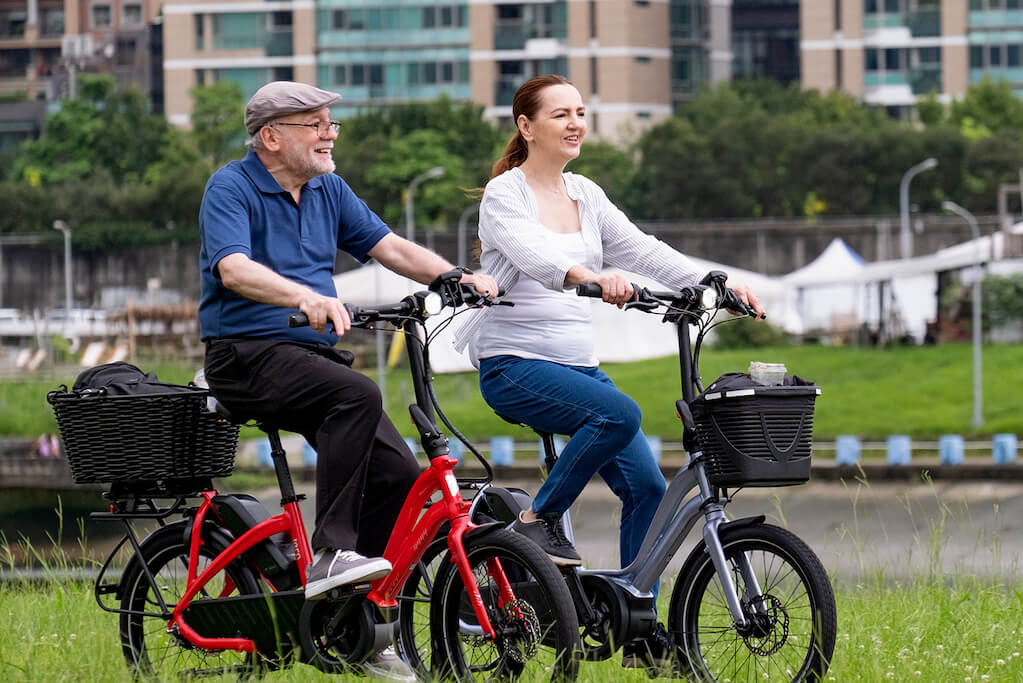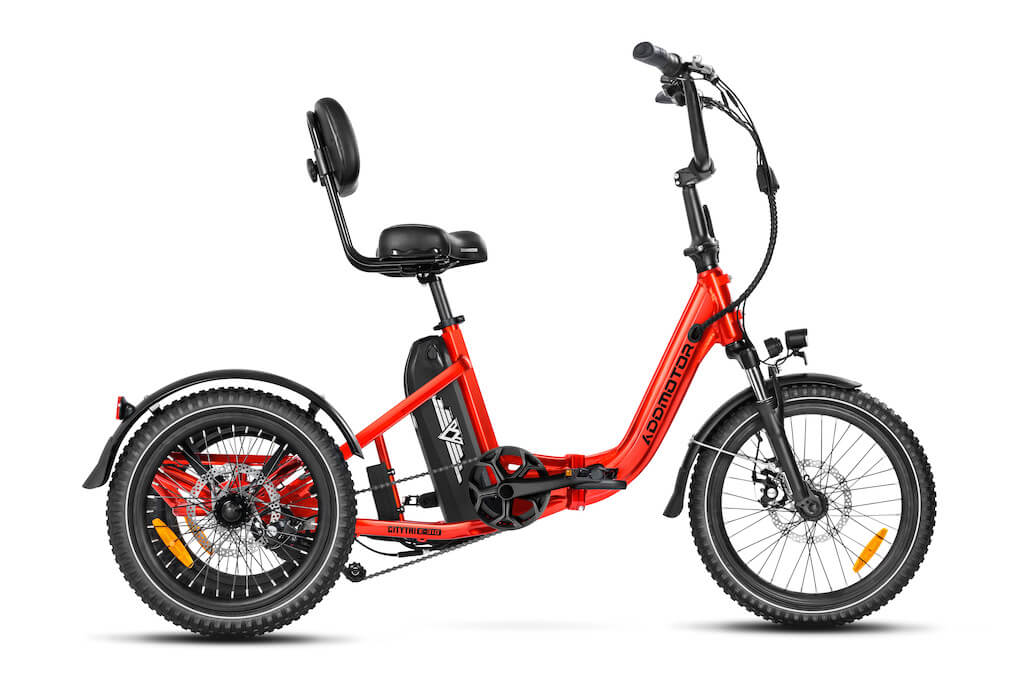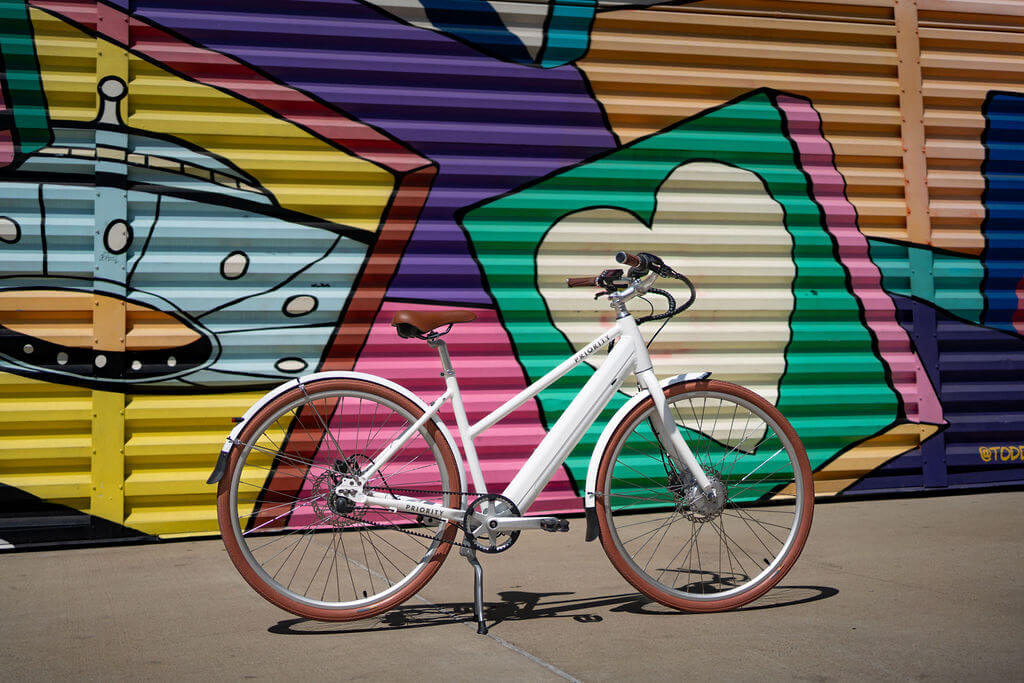Autumn Gear Guide
Find inspiration in our Gear Guide that will keep you out on your bike through wind or rain.
Download NowThere’s an old saying that I’ve heard applied to a variety of areas including real estate, which applies equally well to choosing to take up bicycling: The best time to start riding a bicycle was 20 years ago, and the second best time is today. There is no wrong time to take up cycling as […]
There’s an old saying that I’ve heard applied to a variety of areas including real estate, which applies equally well to choosing to take up bicycling: The best time to start riding a bicycle was 20 years ago, and the second best time is today. There is no wrong time to take up cycling as the benefits are so great both for personal wellness and for all the associated benefits for us all. But, depending on age and physical abilities, choosing a style of bicycle might play an important role.
Older adults might not want to ride a BMX or a steel-framed fixed-gear bike with no brakes, and that’s ok. Most people don’t. Most people want to get a bit of exercise, a boost in mental health and clarity and enjoy the benefits of leaving the car at home. It doesn’t matter what style of bicycle you ride, just that you start turning those pedals.
These days, there are so many incredible styles of bicycle that are directly, ahem, geared to those who aren’t interested in racing around in lycra or bombing downhills in the mountains.
In this article, we will explore the various styles tailored to the needs of older adults and offer examples of each. We will discuss the pros and cons of each, delving deeper into the stories of individuals who have found their perfect ride among step-through bicycles, low-step bikes, recumbent bicycles, adult trikes, and the ever-popular e-bikes. So, fasten your helmet and join us as we pedal through the pros and cons of these versatile bicycles, each offering a unique experience for older riders.
When people think of true utilitarian bicycles, we often imagine cities such as Copenhagen and Amsterdam where riding on the daily is deeply engrained in civic culture. But take a closer look at what everyone is riding and it isn’t the Raleigh 10-speed you had when you were in high school. It’s a bike designed for comfort and the wear and tear of daily all-season riding.
The so-called Dutch bike, is usually a step-through bicycle with an upright riding position, a steel frame, fenders, a chain guard and a handful of gears at most.
For older riders, an upright riding position combined with a step-through frame provides great comfort and allows a full field of vision.
Pros: In the world of cycling, accessibility is key, and step-through bicycles are the gatekeepers to this world. With their uniquely designed frame, these bikes make mounting and dismounting a breeze, catering to those with limited mobility or flexibility. Imagine effortlessly mounting a saddle without having to perform the acrobatics required by a traditional diamond-frame bicycle. This feature alone has made step-through bicycles a favorite among older adults.
But it’s not just about accessibility; step-through bikes also offer comfort in spades. The upright riding position reduces strain on the back and neck, allowing riders to cruise along in comfort while enjoying the scenery. Whether you opt for a traditional city bike, a hybrid, or a cruiser, step-through bicycles come in various models, catering to different preferences.
Cons: However, it’s not all smooth riding in the world of step-through bicycles. One trade-off for the ease of accessibility is a potential sacrifice in speed. These bikes may not match the speed of other styles due to their more relaxed riding position. If you’re aiming for high-intensity rides or off-road adventures, a step-through bike may not be your best companion. But for leisurely jaunts through the park, to the grocery store, or exploring your neighborhood, they are a perfect fit.
For people facing the challenge of getting on and off a bicycle or those with slight balancing difficulties that make it difficult to mount event a regular step-through frame, the low-step bicycle is a beacon of accessibility and comfort. The low-step frame is very similar to a traditional step-through model with the same pros and cons as above but offer an even lower entry point for those seeking a safe and convenient cycling experience. The low center of gravity makes it very easy to balance on one of these bikes.
Pros: low center of gravity, easy to mount and ride.
Cons: the geometry is not for everyone, better for those looking for leisure and utility riding.
There are a growing number of fantastic low-step and ultra-low-step models whether e-bike or traditional acoustic bike such as the Specialized Roll, Tern NBD and the Pedego Boomerang Plus.

Tern NBD
Our journey through bicycle styles now takes us to a seat of unparalleled comfort—the recumbent bicycle. These unique bikes offer a distinctive riding position that can be a game-changer for older riders.
Pros: If comfort is your top priority, recumbent bicycles should be on your radar. The reclined position is a stark departure from the traditional upright stance of most bicycles, and it’s this very feature that makes recumbents a hit among older riders. By spreading your weight across a larger area, the recumbent position minimizes pressure on the wrists, back, and neck, making long rides feel like a breeze.
Furthermore, recumbent bicycles can be quite fast due to their streamlined design. The aerodynamic advantages of this style can help you effortlessly glide through the wind, covering ground more quickly and efficiently. This makes them particularly attractive to older adults who still have a need for speed.
Cons: Despite their comfort and speed, recumbent bicycles come with their own set of challenges. One of the most notable drawbacks is visibility in traffic. The lower position of the rider can make them less noticeable to drivers, which is a concern in areas with heavy traffic. Additionally, recumbent bicycles are not as common as traditional bicycles, which can make finding parts or knowledgeable service more challenging.
There are a number of brands specialising in recumbent bicycles such as Catrike (pictured below).

Catrike recumbent bicycle
For those who crave stability and balance above all else, the next stop on our journey is adult trikes. These three-wheeled bicycles offer unmatched equilibrium, making them perfect for older riders concerned about taking a spill.
Pros: Stability is the name of the game when it comes to adult trikes. These three-wheeled marvels provide an unmatched sense of balance, virtually eliminating the risk of falling. This feature makes them an excellent choice for older adults who may have concerns about balance or mobility issues.
Moreover, many adult trikes come equipped with cargo space, often in the form of baskets or rear storage. This added storage capacity is a practical feature, particularly for running errands or picking up groceries, allowing older riders to maintain their independence and self-sufficiency.
Cons: While adult trikes offer unparalleled stability, they do come with some trade-offs. Their bulkiness and the extended width due to the two rear wheels can make them less maneuverable than traditional two-wheeled bicycles especially in narrow bike lanes and traffic. This can be a challenge when navigating crowded urban environments. Furthermore, adult trikes are primarily designed for flat terrain.
The adult trike offerings has grown exponentially of late, especially when it comes to electric models. For instance, a new model from Addmotor, shown below, offers a great package of features at a reasonable price.

Electric-assist bicycles in general have gained immense popularity in recent years, offering a new level of versatility and assistance to riders of all ages and in all bicycle styles from folding bikes to cargo bikes and trikes. And, an electric bike’s ease of use and accessibility makes it a popular choice for older adults.
Pros: E-bikes represent a revolution in cycling, and for older adults, they can be a game-changer. The most significant advantage of e-bikes is their pedal-assist feature, which provides a helping hand when tackling inclines or covering long distances. This means that older riders can maintain a comfortable pace and extend their range without overexerting themselves.
E-bikes come in various styles, from step-through to mountain e-bikes, accommodating different preferences and riding scenarios. They offer a versatile solution for those who want to enjoy the benefits of cycling without the potential physical strain.
For older riders, e-bikes can serve as a fitness booster. They allow individuals to exercise at their own pace while still covering substantial distances. This is particularly beneficial for those who want to maintain or improve their fitness levels while enjoying the outdoors.
Cons: However, like any technological innovation, e-bikes come with their own set of considerations. Cost can be a significant factor, as e-bikes are generally more expensive than traditional bicycles due to the added electric components. Maintenance can also be a consideration, as the motor and battery may require occasional servicing to ensure they function optimally. In addition, it is important to have adequate storage area for an e-bike that is secure to prevent theft.
E-bikes are also heavier than traditional bicycles due to the added weight of the motor and battery, which can be a drawback for those who need to carry or store their bikes in tight spaces.
There are so many models and styles to consider when shopping for an e-bike. For older adults, a step-through model e-bike that is lightweight and easy to use might be an ideal option.
One good option is the Priority e-Classic Plus, shown below, which is a simple, no-nonsense step-through hybrid e-bike that comes with a belt drive, which will cut down on maintenance and cleaning for older adults.

Our final stop on this bicycle journey takes us to the world of folding bicycles. These compact, versatile bikes have gained popularity for their portability and accessibility.
Pros: Folding bicycles are a practical solution for older adults who need a bicycle that is easy to transport and store. Their compact size and foldable design make them ideal for those with limited storage space or those who want the convenience of taking their bike with them on public transportation.
Many folding bikes offer step-through or low-step options, enhancing accessibility for older riders. This feature ensures that mounting and dismounting remain effortless, even with the added benefit of a folding frame.
Cons: However, there are some trade-offs with folding bicycles. In terms of speed and comfort, they may not match the performance of full-sized bikes. The smaller wheels and frame can result in a less comfortable ride, especially on rough terrain.
The key to choosing the right bicycle lies in prioritizing factors such as accessibility, stability, comfort, and intended use. Whether you opt for the ease of a step-through or low-step bike, the comfort of a recumbent, the stability of an adult trike, the assistance of an e-bike, or the portability of a folding bicycle, there’s a perfect ride out there for everyone.
Remember, age is just a number, and the right bicycle can help you pedal your way to a healthier, more fulfilling life. The world of cycling is vast, and it’s waiting for you to explore its beauty, one pedal stroke at a time.
Find inspiration in our Gear Guide that will keep you out on your bike through wind or rain.
Download Now
I’ve been riding A2B EBikes for 13 Years. I stared riding an A2B Metro when I was 60 years old, commuting to work and riding around town. I rode that bike for 10 years and 10,000 miles. I retired and purchased a slightly used A2B Octave in 2011. I no longer commute daily but still love riding my A2B, grocery shopping and riding for pleasure. Two things I really like about these bikes, open frames and 20″ wheels, stable and easy to get on and off. These bikes are heavy (80+ lbs.) and more of an Electric MoPed.
Comments are closed.